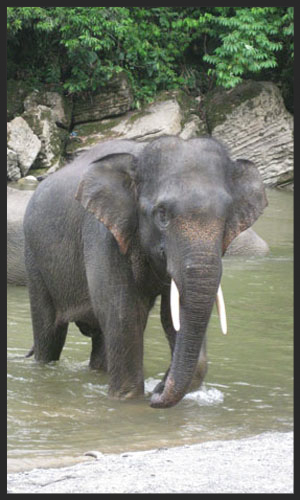You may remember the picture of Noy An with veterinarian Emma Chave from our California Pizza Kitchen fundraiser. Her mother, Mae Kham di, worked in logging. There are no real settled logging camps in Laos. Private timber companies hire a few mahout/elephant pairs for a while and then the mahouts move their elephants to other work sites. More than 50% of the Lao domesticated elephants still work in logging, but as the forest is shrinking, they have less work than before. Therefore a proper, responsible transition towards tourism is really needed.
ElefantAsia is a French NGO working since 2001 to protect the Lao elephants. Their projects help the Lao domestic population all over Laos and they run the only elephant hospital in the country, based at the Elephant Conservation Center (ECC) in Sayaboury, Laos.
Owners of working elephants in Asian countries usually try to make sure their elephants do not become pregnant. An elephant’s time out of service during the latter stage of pregnancy and during the first year or two of the calf’s life can inflict very real economic hardship on the owner and his family. Or, worse, the elephant may have to work her entire pregnancy and return to work with a calf that does not get the proper rest and time to nurse that it needs to thrive.
Noy An is a beneficiary of the “Baby Bonus Program’, an initiative of ElefantAsia. For Noy An, private donors helped ElefantAsia sponsor the bonus to Mae Kham di’s owners in cash and now the ECC is paying a salary for the mahout as Kham di is ‘hired’ as part of the well thought out eco-tourism camp at the ECC. The contract for Noy An’s bonus is two years and is allowing Noy An the opportunity of learning about being an elephant at her mother’s side and as a healthy youngster, she is active and inquisitive and a true joy to behold.
In Laos, females are bred to both domestic and wild bulls, with a resulting healthier genetic diversity of the population. And, as we all know, if there are no baby elephants, the day will come when there will be no elephants. That is not an acceptable possibility if we can help it.
Asian Elephant Support is pleased to have supported the Elephant Conservation Center with modest funding the last three years.
Noy An nursing














